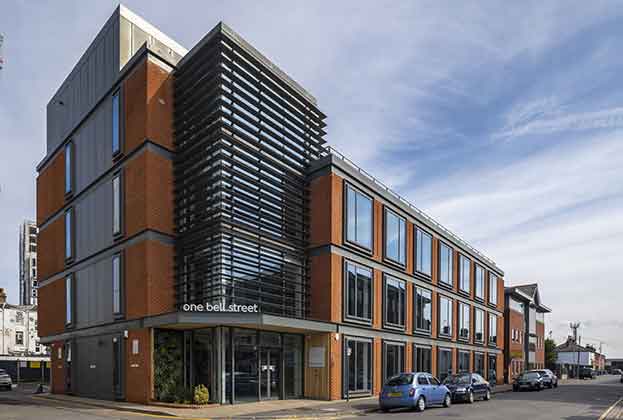The coronavirus pandemic has, in the space of six months, had a major impact on people’s lives across the world and the way in which our workforce has been forced to operate. From how and if we travel to a place of work to how we move around the building and how we undertake the work itself, all while maintaining distancing measures, is a significant undertaking.
How this looks will be tailored to each building, but the interaction between landlord and occupier will be universal when it comes to creating a sense of normality.
Equally, how this is supported by the use of technology in both the short and longer term, will be something businesses big and small will have to consider.
Employees first
People are undoubtedly one of the most important assets of any company and so, going forwards, active monitoring of employees in the workplace is an immediate consideration for companies looking to put staff at ease while encouraging a return to work.
We expect businesses to explore the further deployment of technologies that allow for more effective monitoring of employee access and movement within a workspace, while balancing this against employees’ privacy concerns.
The most likely form to align this is the rollout of an app to perform a variety of functions including the tracking of employees in the building, management of desk and meeting room space, wayfinding, delivery alerts and much more.
Social interaction
Social media platforms and online collaboration tools have arguably never been of greater importance to businesses to facilitate communication and community among colleagues, customers and clients.
The extension of a physical workplace into a digital one must be undertaken with a cohesive strategy in mind, encouraging the integration of new and existing employees, whether working in the office, from home or another location. This will be key to maintaining a company’s cultural identity while cementing a nimble approach to working.
A is for automation
It is likely that over the next few months and years, we will see increases in the automation of everyday systems at work. From the moment we step into the building using Bluetooth touch-free door access to how the ventilation and air-conditioning systems are controlled by sensors.
Although the technology has been evolving, it is probably still early days for robots, AI, machine learning and chat bots, but we can see how it could all fall into place and the increase of automation could support the return to the workplace and facilitate social distancing measures along with great customer service and building performance.
Make IT work
Covid-19 aside, it has become more obvious over the last decade that there is a need to move towards smarter buildings with all building systems integrated to deliver a safe experience for building users.
This requires the installation of IT infrastructure, connecting all building systems with a middle digital layer which can be represented via a digital twin demonstrating the capacity of piloting and monitoring on real time the use of the building, conditions and occupier sentiment.
Further information
Read more: Office FiT: Adapt, Evolve, Improve
.jpg)




.jpg)

.jpg)
.jpg)

(1).jpg)